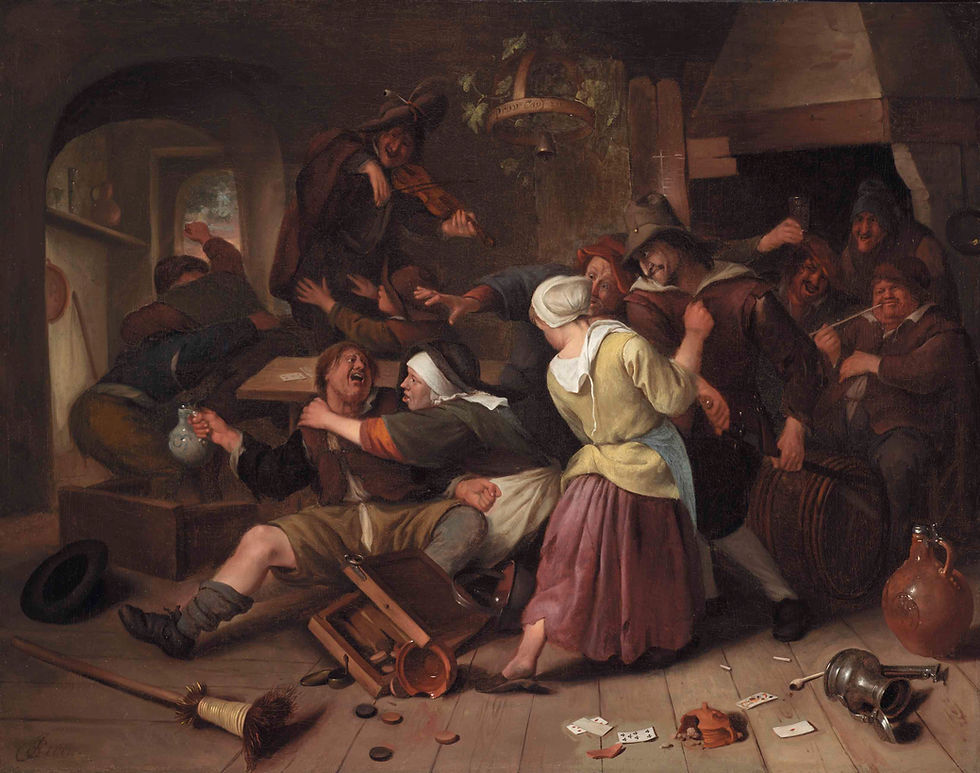Jan Steen - Gamblers Quarreling
- Alexandra Tuschka
- 4. Jan. 2021
- 2 Min. Lesezeit
Aktualisiert: 7. Jan. 2021
von Alexandra Tuschka
The fiddler underlines a macabre scene with a smile: for in a moment the right-hand man will draw his sword and stab the opponent, if the lady can't stop him yet. The latter, in turn, has already gone to the ground and quickly grabbed a jug, which he wants to pull over the opponent's head. The violence and immediacy of the scene are underlined by overturned furniture and broken vessels. The game of "backgammon", which has also fallen to the floor, loses its stones due to the violence. All sorts of vessels have a light still-life character and show that Steen was able to present a variety of materials in a haptic way.
The - much more vicious - cards also testify to a lively evening of games in the pub. Did someone cheat or are we dealing with a sore loser? Also in the right background, two men are already engaged in a tense quarrel. A boy - he should have been in bed long ago - tries to intervene. In the chandelier the words: "Prov cap 20 ver i". What do they mean? They refer to a biblical passage in Solomon: "Wine makes loose men, and strong drink makes wild; he who has a desire for it never becomes wise."

Steen has shown a typical "tavern scene", which in most cases takes place in the lower bourgeois or peasant class. The elements are mostly similar: meaningless flirting, gambling, boozing, and a mood that can't decide between exuberance and aggressiveness, as if a good brawl was part of good manners. The emerging Netherlands produced a higher bourgeoisie and rich merchants through trade, among whom there were their own social rules. Thus, it was necessary to distinguish oneself from the lower classes by controlling emotions and affects. Pictures like these, which make the people shown appear extremely primitive and coarse, show off their depravity and served as amusement. They are not to be understood socially critical, but were an instrument of demarcation. Not without sympathy, as one will notice even today when smiling at the pictures.
Jan Steen - Gamblers Quarreling
Oil on canvas, 1665, 70.5 x 88.9 cm, Institute of Art in Detroit









